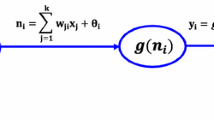Abstract
Intricate engineering problems commonly make use of complex algorithms whose implementation requires high-end digital devices which are expensive, bulky, and computationally demanding. More often than not, the greater the expected outcomes are, the higher the trade-offs will be between hardware capabilities and the algorithm complexity, which, in the case of small embedded systems, tend to favor the algorithms’ simplification. Hence, an implementation methodology that enables the usage of complex algorithms in restricted hardware is highly desirable. Thereby, this work proposes a piece-wise, n-dimensional interpolation technique to execute a given algorithm in a black-box fashion, i.e., disregarding its conceptual or computational technicalities and building a numerical replica, thus trading processing burden for memory usage. This approach is tested for Artificial Neural Networks and Fuzzy Logic Control (FLC), commonly simplified for attaining implementation, and compared against standardized tools. Similarly, the implementation of an FLC over a LEGO MINDSTORMS\(^{\texttt {TM}}\) robot is achieved in real-time by the proposed technique. The proposed method has shown to conclusively outperform standardized platforms in terms of execution time and, in many cases, memory usage.













Similar content being viewed by others
References
Burkhard, H.D.: Let the machines do. How intelligent is Artificial Intelligence? In: 36th International Convention on Information Communication Technology Electronics Microelectronics, pp. 947–952 (2013)
Hawes, N.: A survey of motivation frameworks for intelligent systems. Artif. Intell. 175, 1020–1036 (2011)
Sun, Y.; Tang, S.; Meng, Z.; Zhao, Y.; Yang, Y.: A scalable accuracy fuzzy logic controller on FPGA. Expert Syst. Appl. 42, 6658–6673 (2015)
Schrieber, M.D.; Biglarbegian, M.: Hardware implementation and performance comparison of interval type-2 fuzzy logic controllers for real-time applications. Appl. Soft Comput. 32, 175–188 (2015)
Fayek, H.M.; Elamvazuthi, I.; Perumal, N.; Venkatesh, B.: A controller based on Optimal Type-2 Fuzzy Logic: systematic design, optimization and real-time implementation. ISA Trans. 53, 1583–1591 (2014)
Diaz, C.; Sanchez, G.; Duchen, G.; Nakano, M.; Perez, H.: An efficient hardware implementation of a novel unary Spiking Neural Network multiplier with variable dendritic delays. Neurocomputing 189, 130–134 (2016)
Javier Martínez, J.; Garrigós, J.; Toledo, J.; Manuel Ferrández, J.: An efficient and expandable hardware implementation of multilayer cellular neural networks. Neurocomputing 114, 54–62 (2013)
Dimopoulos, A.; Pavlatos, C.; Panagopoulos, I.; Papakonstantinou, G.: An efficient hardware implementation for AI applications. In: Antoniou, G., Potamias, G., Spyropoulos, C., Plexousakis, D. (eds.) Advances in Artificial Intelligence, no. 3955 in Lecture Notes in Computer Science, pp. 35–45. Springer, Berlin (2006)
Fe, J.D.; Aliaga, R.J.; Gadea-Gironés, R.: Evolutionary optimization of neural networks with heterogeneous computation: study and implementation. J. Supercomput. 71, 2944–2962 (2015)
OrlowskaKowalska, T.; Kaminski, M.: FPGA implementation of the multilayer neural network for the speed estimation of the two-mass drive system. IEEE Trans. Ind. Inform. 7, 436–445 (2011)
Misra, J.; Saha, I.: Artificial neural networks in hardware: a survey of two decades of progress. Neurocomputing 74, 239–255 (2010)
Tilli, T.: High performance software implementations of fuzzy logic algorithm’s. Fuzzy Sets Syst. 66, 233–240 (1994)
Mustafa, M.M.: Defuzzication using polynomial approximation. In: TENCON 2000. Proceedings, vol. 3, pp. 342–347 (2000)
Osman, B., Zhu, H.: adding fuzzy lookup table type method to the comparable milling machining control design based on MAT LAB/SIMULINK. In: 4th International Conference on Information Science and Control Engineering (ICISCE), pp. 830–834 (2017)
Liu, X.; Mendel, J.M.: Connect Karnik–Mendel algorithms to root-finding for computing the centroid of an interval Type-2 fuzzy set. IEEE Trans. Fuzzy Syst. 19, 652–665 (2011)
Wu, D.: An overview of alternative type-reduction approaches for reducing the computational cost of interval type-2 fuzzy logic controllers. In: IEEE International Conference on Fuzzy Systems, pp. 1–8 (2012)
Salaken, S.M.; Khosravi, A.; Nahavandi, S.; Wu, D.: Switch point finding using polynomial regression for fuzzy type reduction algorithms. In: IEEE International Conference on Fuzzy Systems (FUZZ-IEEE), pp. 1–6 (2015)
Salaken, S.M.; Khosravi, A.; Nahavandi, S.; Wu, D.: Approximation of centroid end-points and switch points for replacing type reduction algorithms. Int. J. Approx. Reason. 66, 39–52 (2015)
Baleghy, N.A.; Mashhadi, S.K.e.d.M.: Design and implementation fuzzy controller in the frost-free refrigerator by using multivariate regression. In: 20th Iranian Conference on Electrical Engineering (ICEE2012), pp. 840–844 (2012)
Várkonyi-Kóczy, A.R.; Tusor, B.; Tóth, J.T.: A fuzzy hypermatrix-based skin color filtering method. In: IEEE 19th International Conference on Intelligent Engineering Systems (INES), pp. 173–178 (2015)
Várkonyi-Kóczy, A.R.; Tusor, B.; Tóth, J.T.: Active problem workspace reduction with a fast fuzzy classifier for real-time applications. In: IEEE International Conference on Systems, Man, and Cybernetics (SMC), pp. 004423–004428 (2016)
Juang, C.F.; Juang, K.J.: Reduced interval type-2 neural fuzzy system using weighted bound-set boundary operation for computation speedup and chip implementation. IEEE Trans. Fuzzy Syst. 21, 477–491 (2013)
Wyrwoł, B.; Hrynkiewicz, E.: Decomposition of the fuzzy inference system for implementation in the FPGA structure. Int. J. Appl. Math. Comput. 23, 473–483 (2013)
Wyrwoł, B.; Hrynkiewicz, E.: Implementation of a microcontroller-based simplified FITA-FIS model. Microprocess. Microsyst. 44, 22–27 (2016)
Darvill, J.; Tisan, A.; Cirstea, M.: A novel ANFIS algorithm architecture for FPGA implementation. In: IEEE 26th International Symposium on Industrial Electronics (ISIE), pp. 1243–1248 (2017)
Lichman, M.: UCI Machine Learning Repository: Iris Data Set (2013). https://archive.ics.uci.edu/ml/datasets/Iris
Author information
Authors and Affiliations
Corresponding author
Additional information
This research is a product of the Project 266632 “Laboratorio Binacional para la Gestión Inteligente de la Sustentabilidad Energética y la Formación Tecnológica” [“Bi-National Laboratory on Smart Sustainable Energy Management and Technology Training”], funded by the CONACYT-SENER (Consejo Nacional de Ciencia y Tecnología - Secretaría de Energía) Fund for Energy Sustainability (Agreement: S0019201401).
Rights and permissions
About this article
Cite this article
Ibarra, L., Balderas, D., Ponce, P. et al. Fast Execution of Black-Box Algorithms Through a Piece-Wise Linear Interpolation Technique. Arab J Sci Eng 44, 9443–9453 (2019). https://doi.org/10.1007/s13369-019-04042-y
Received:
Accepted:
Published:
Issue Date:
DOI: https://doi.org/10.1007/s13369-019-04042-y




